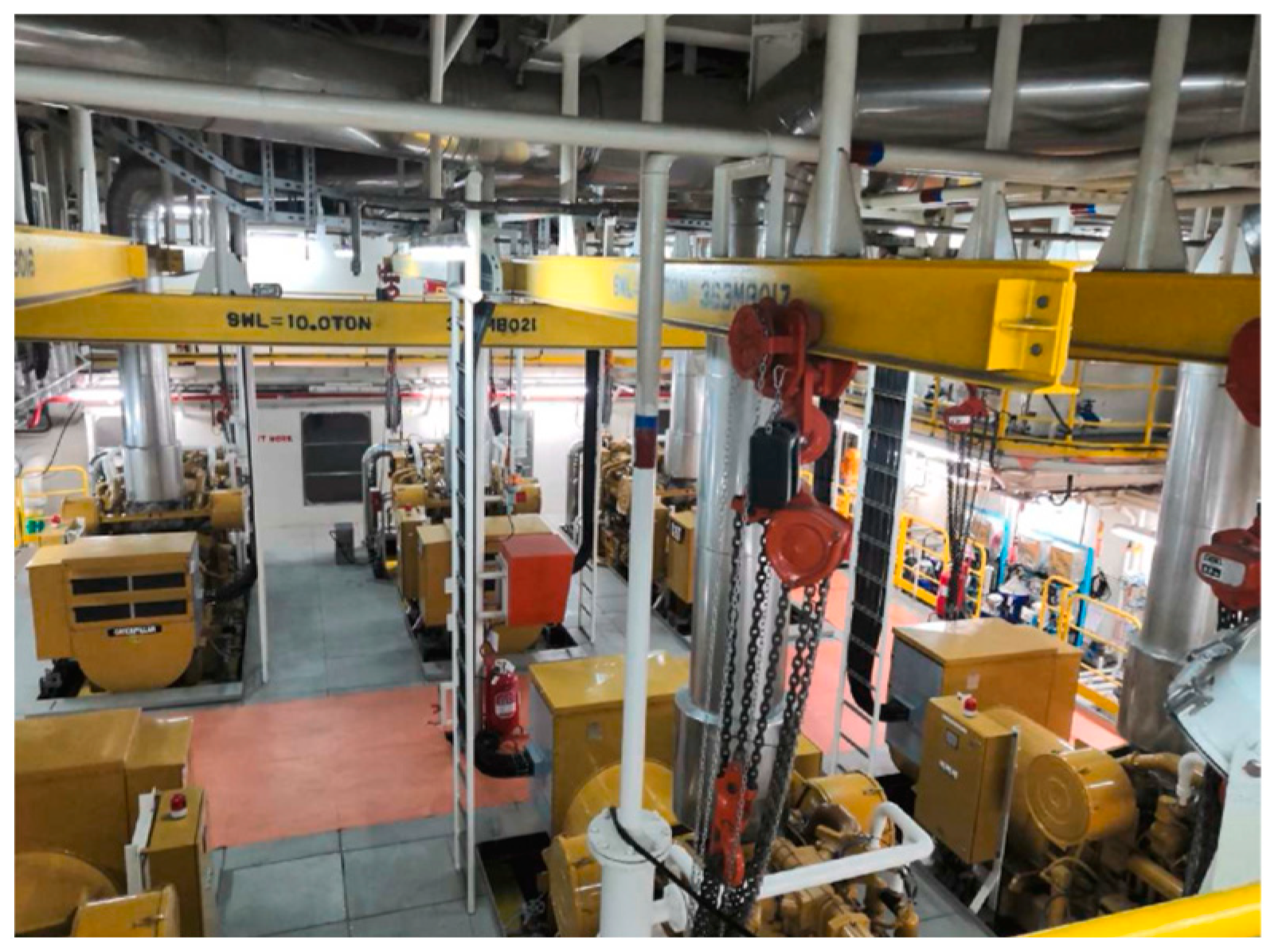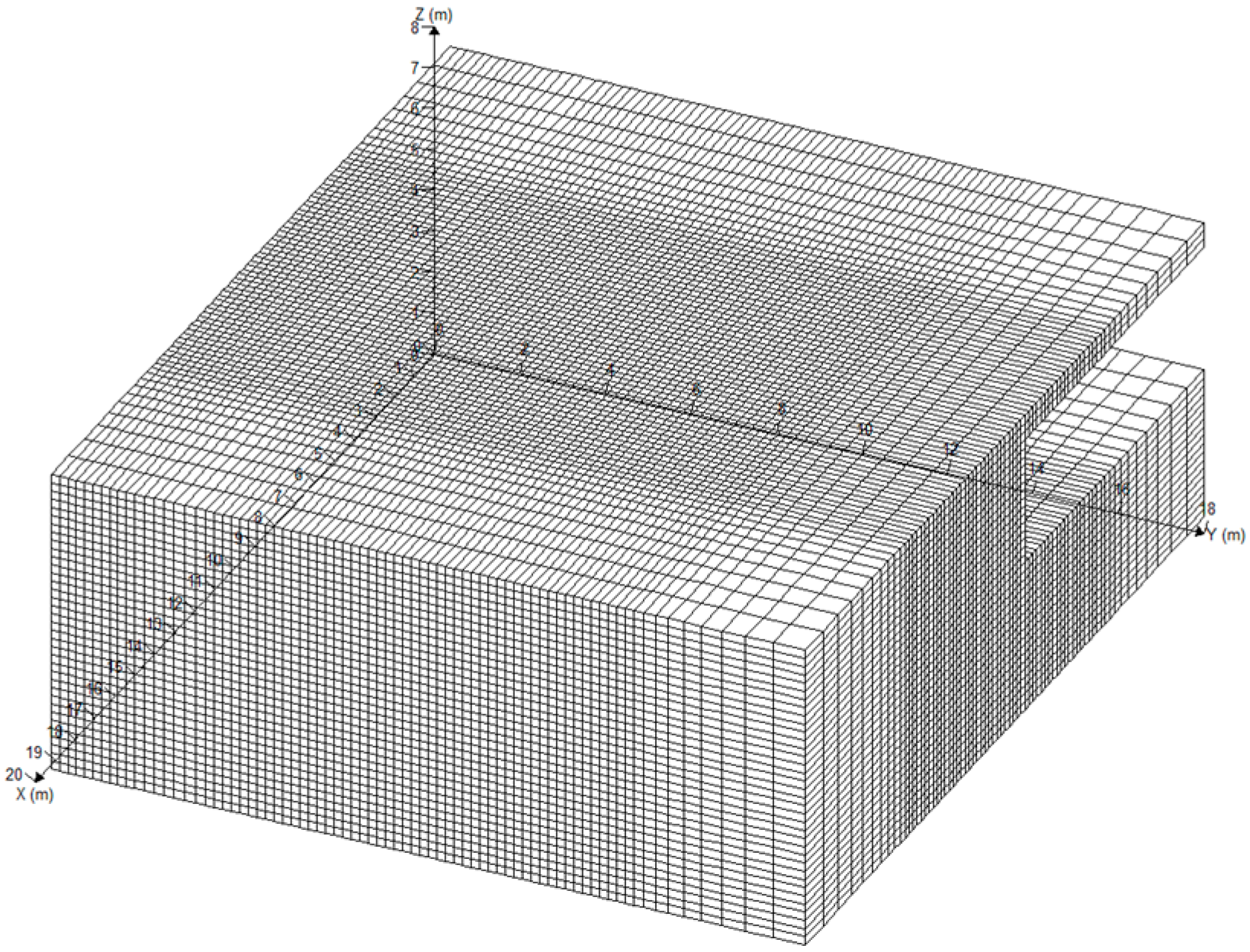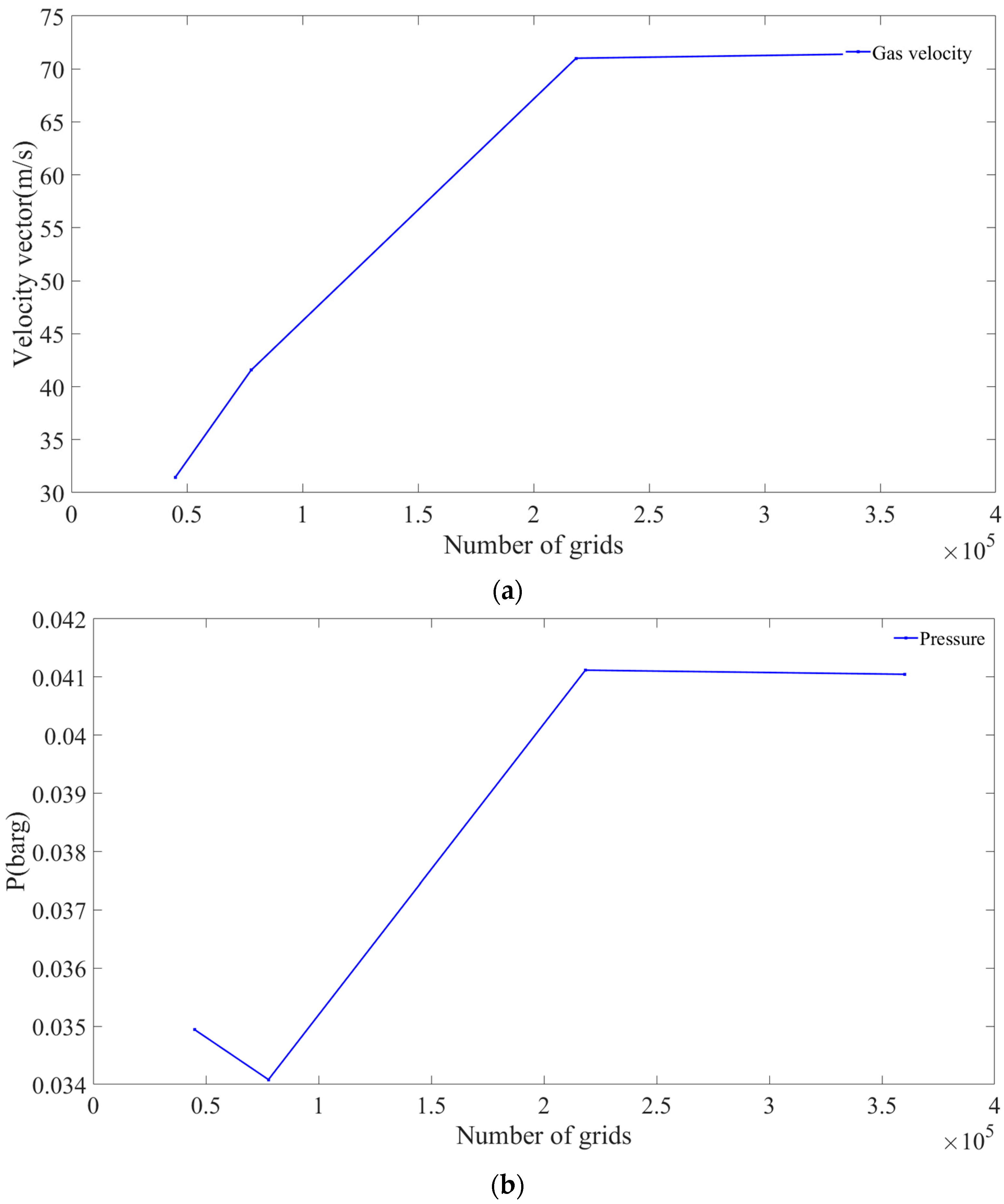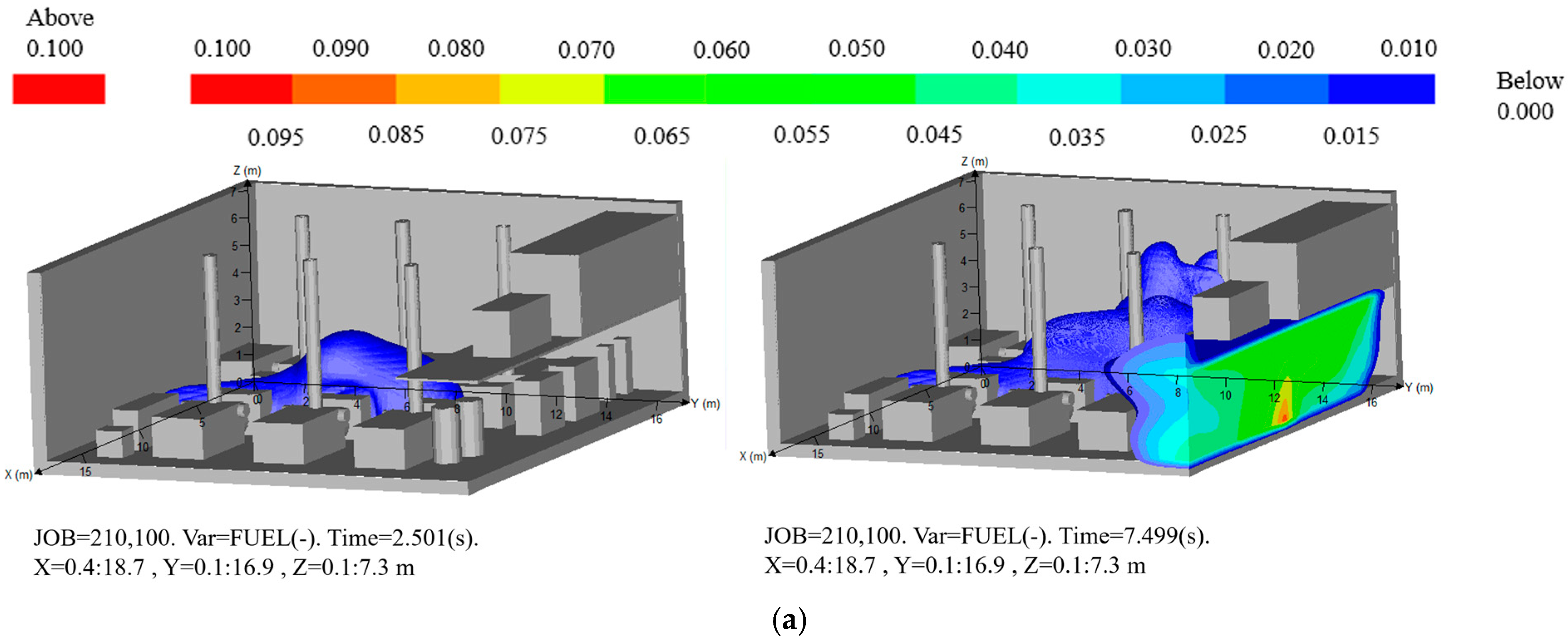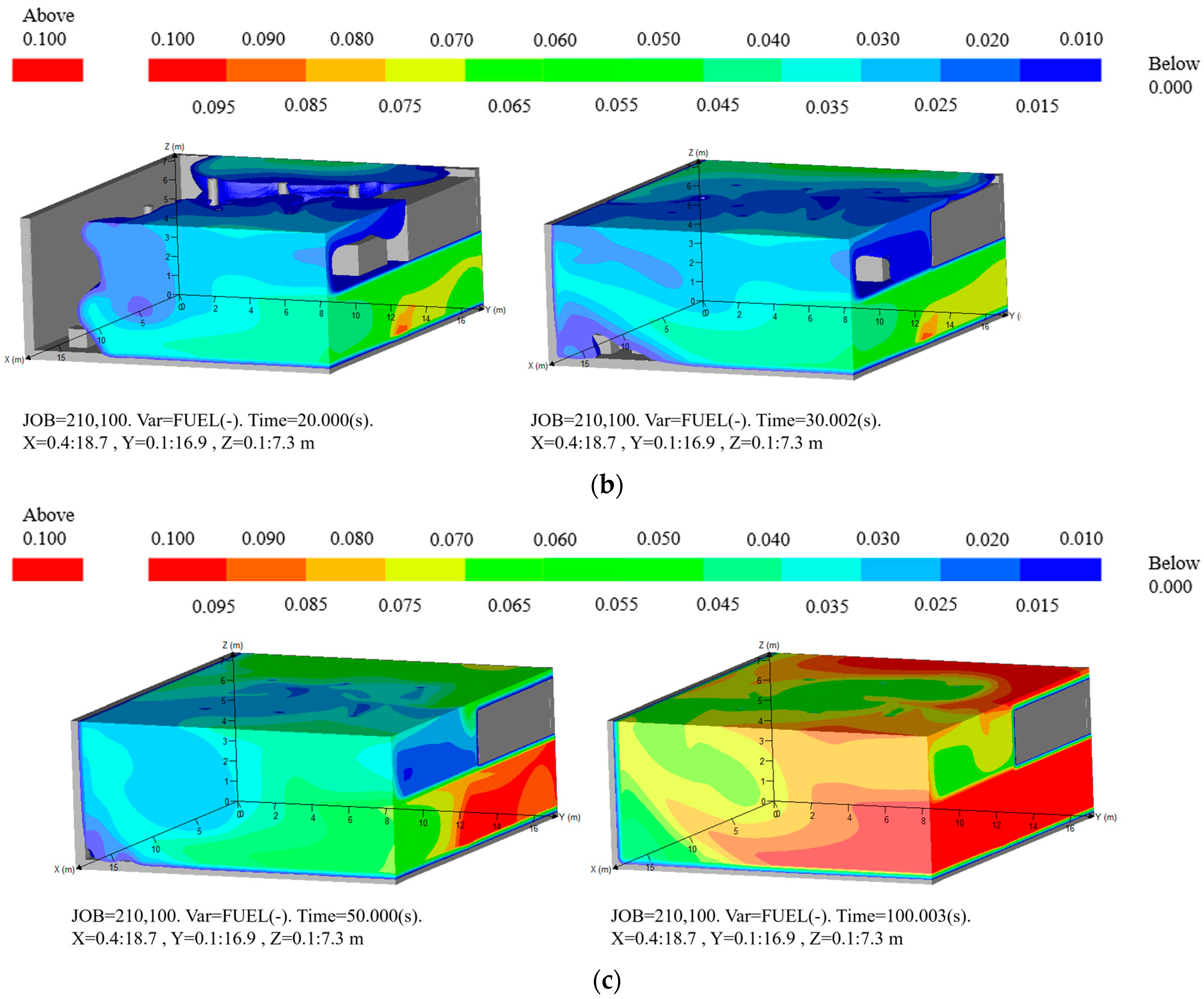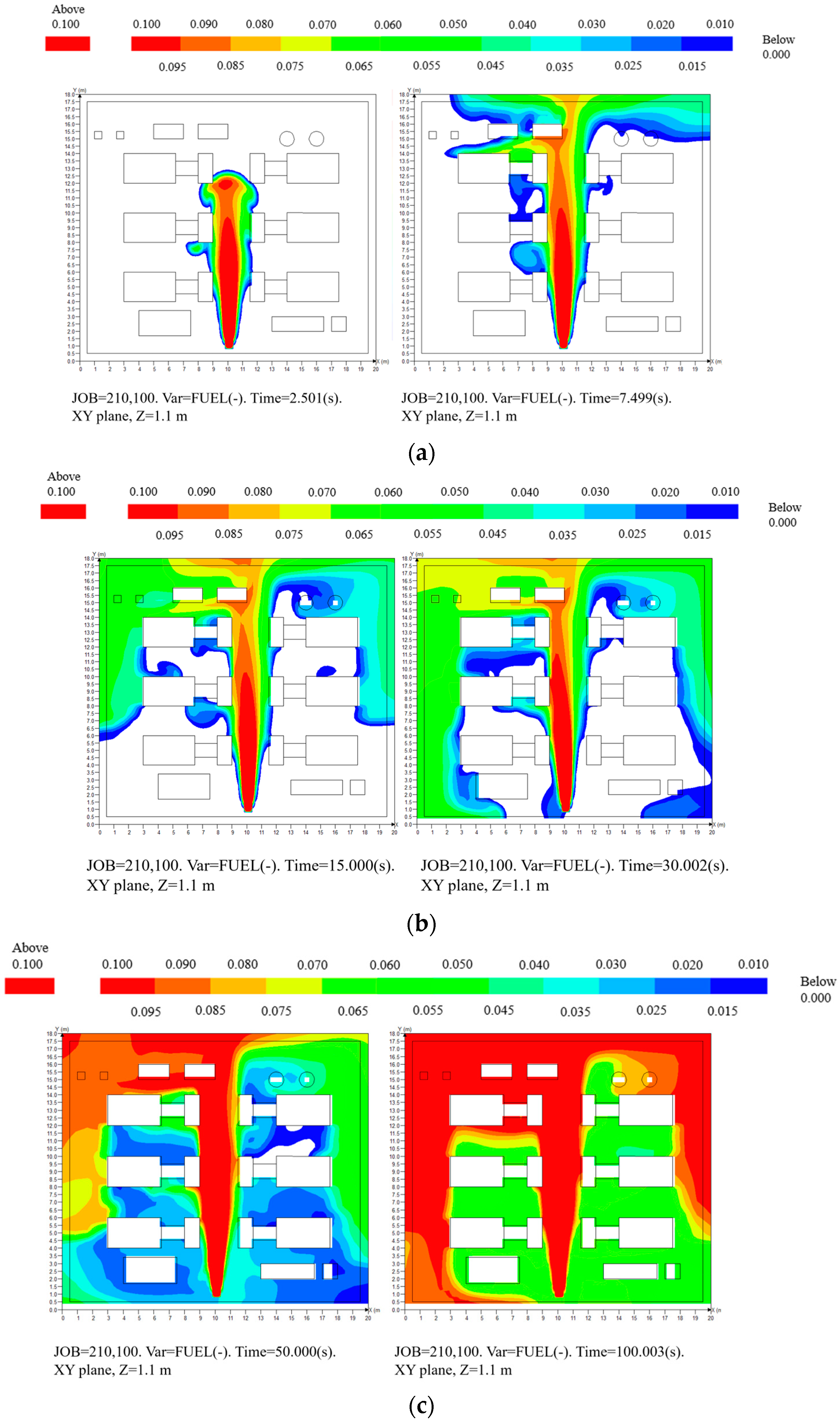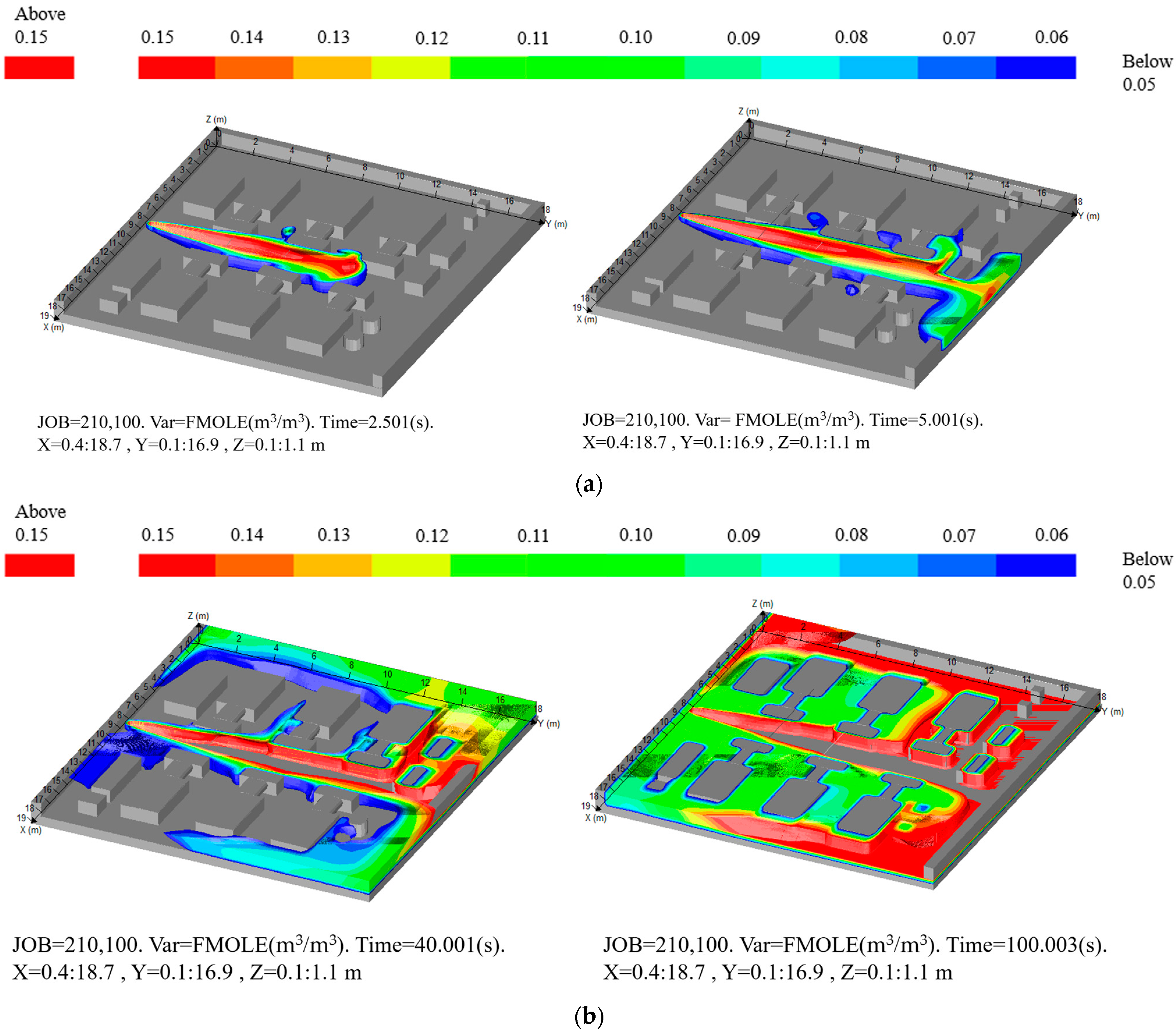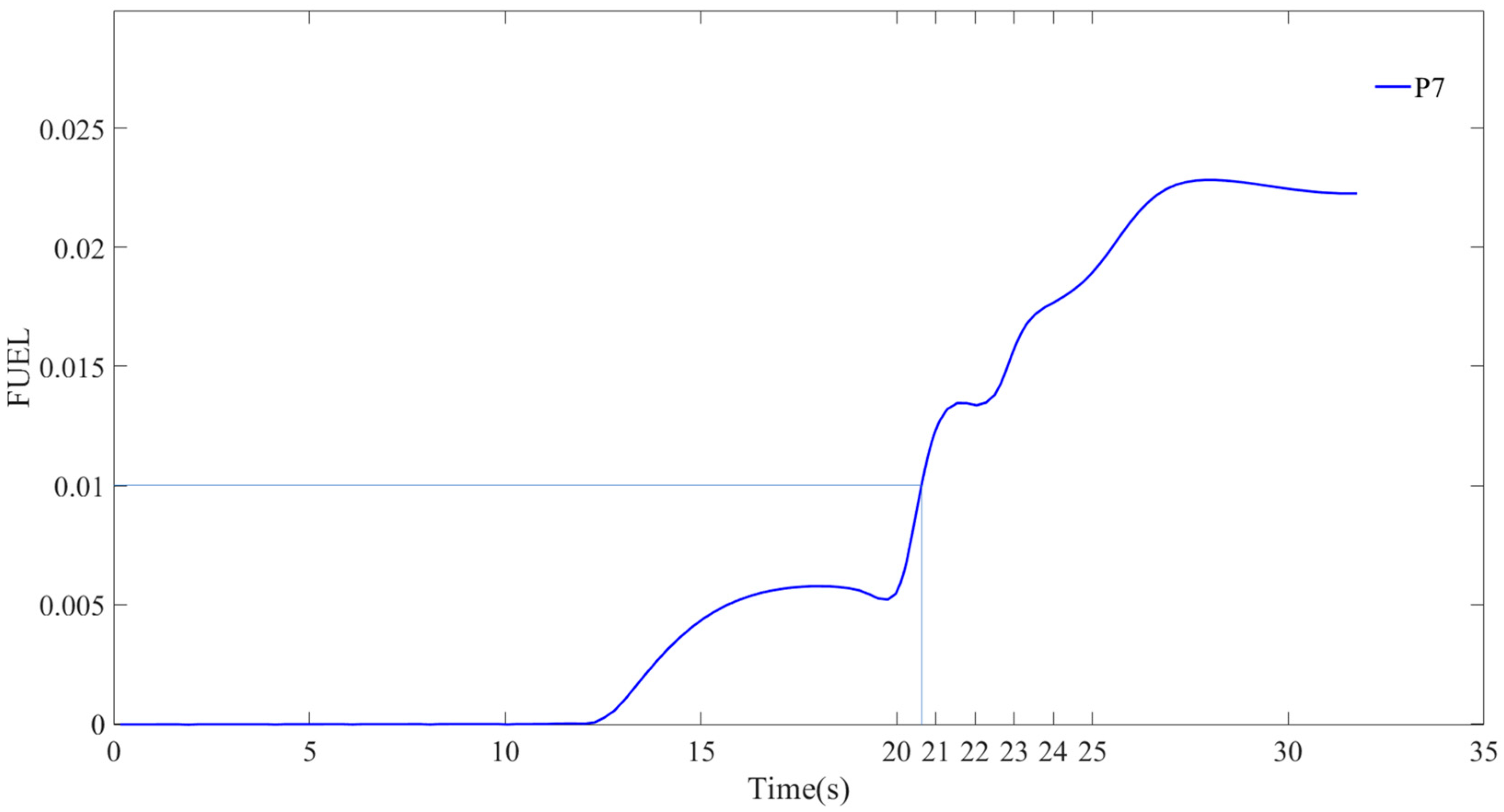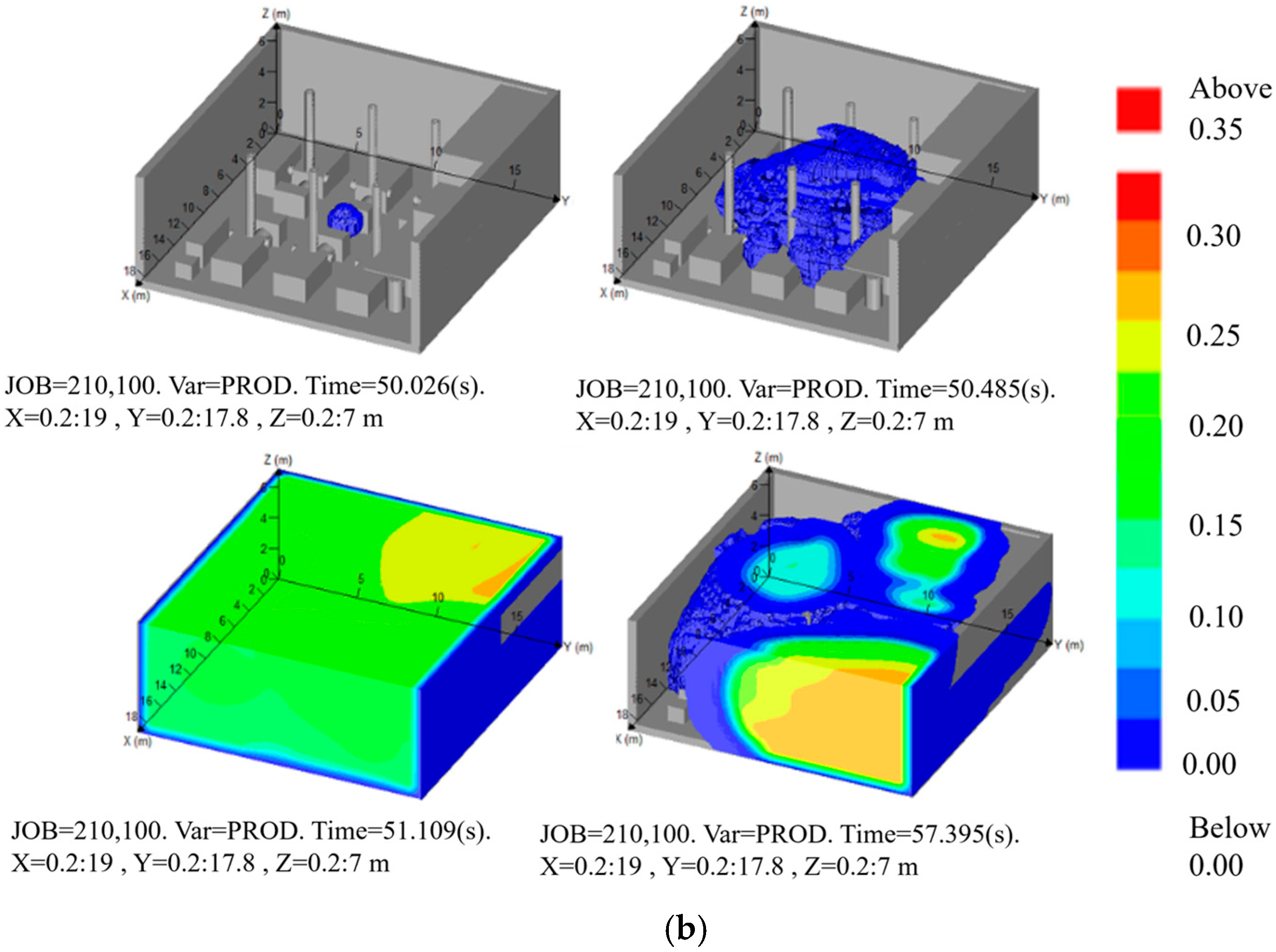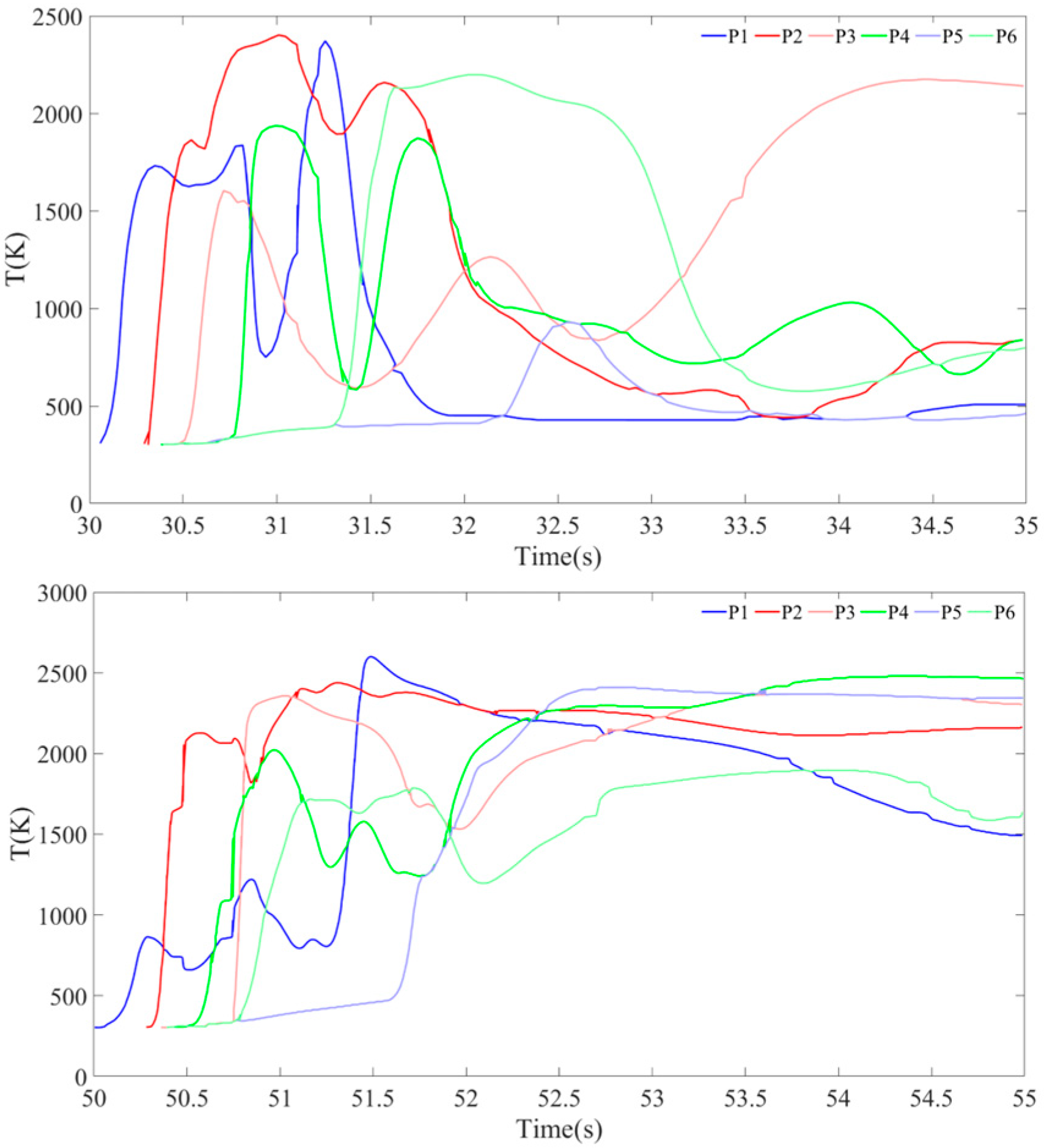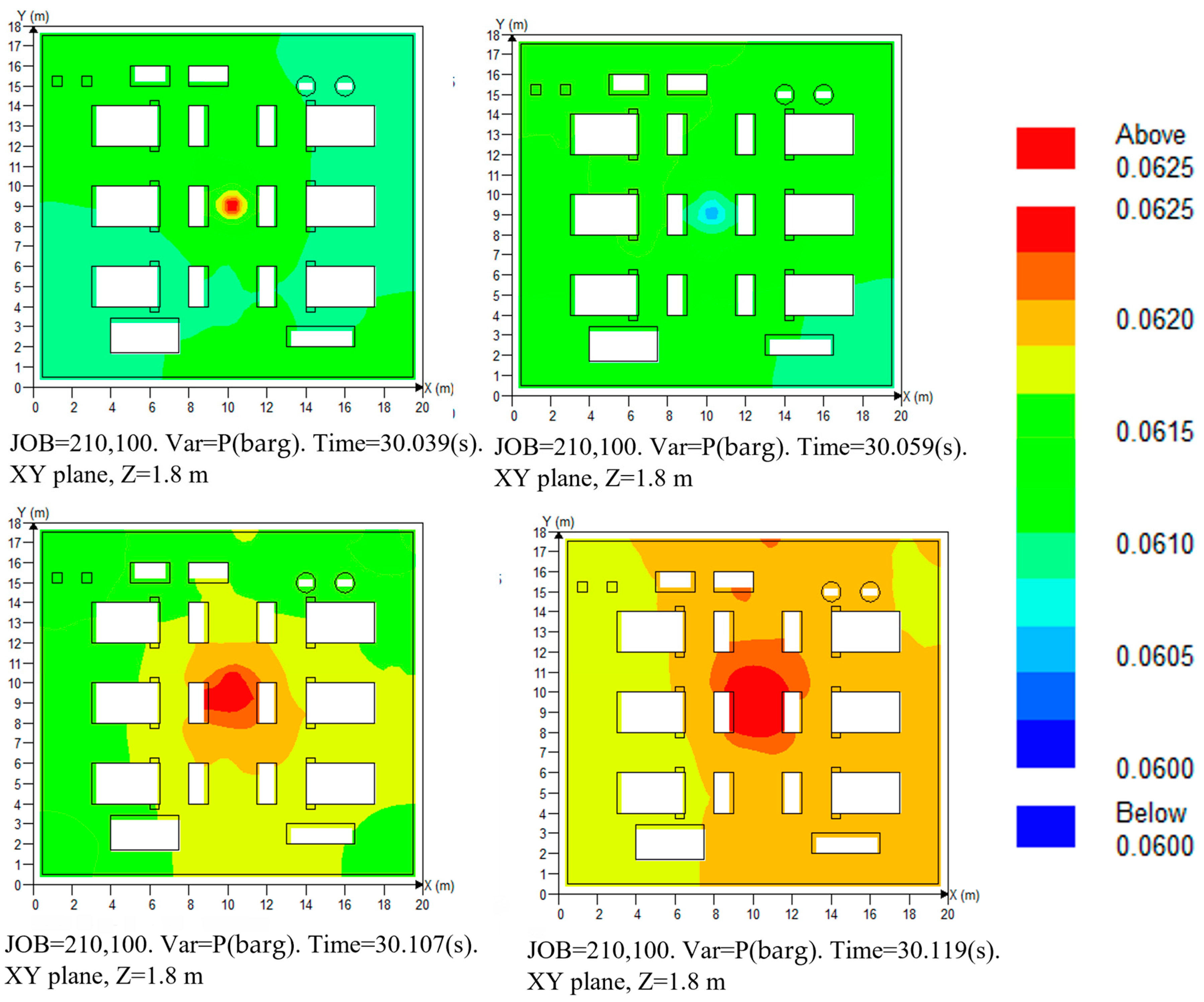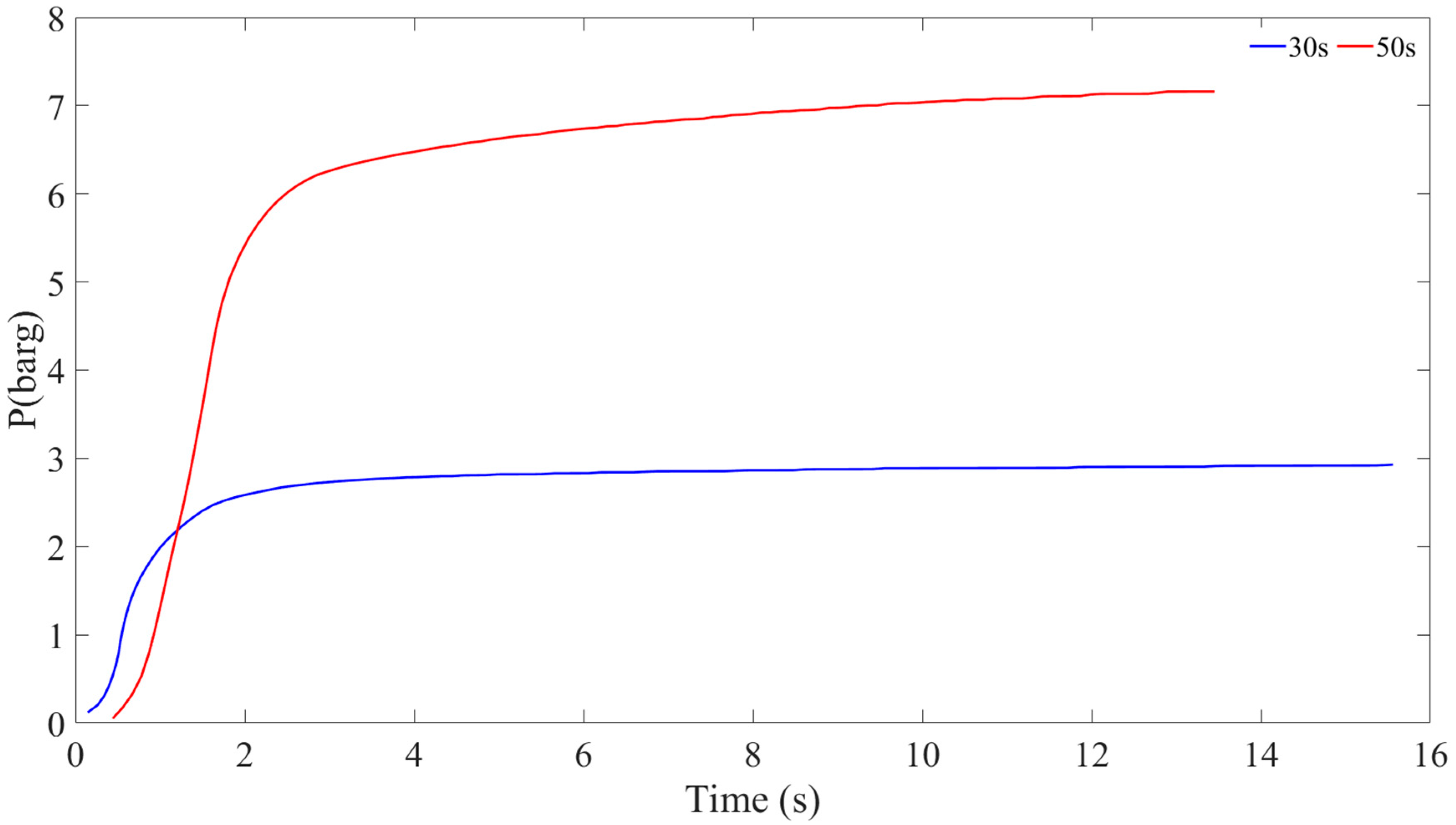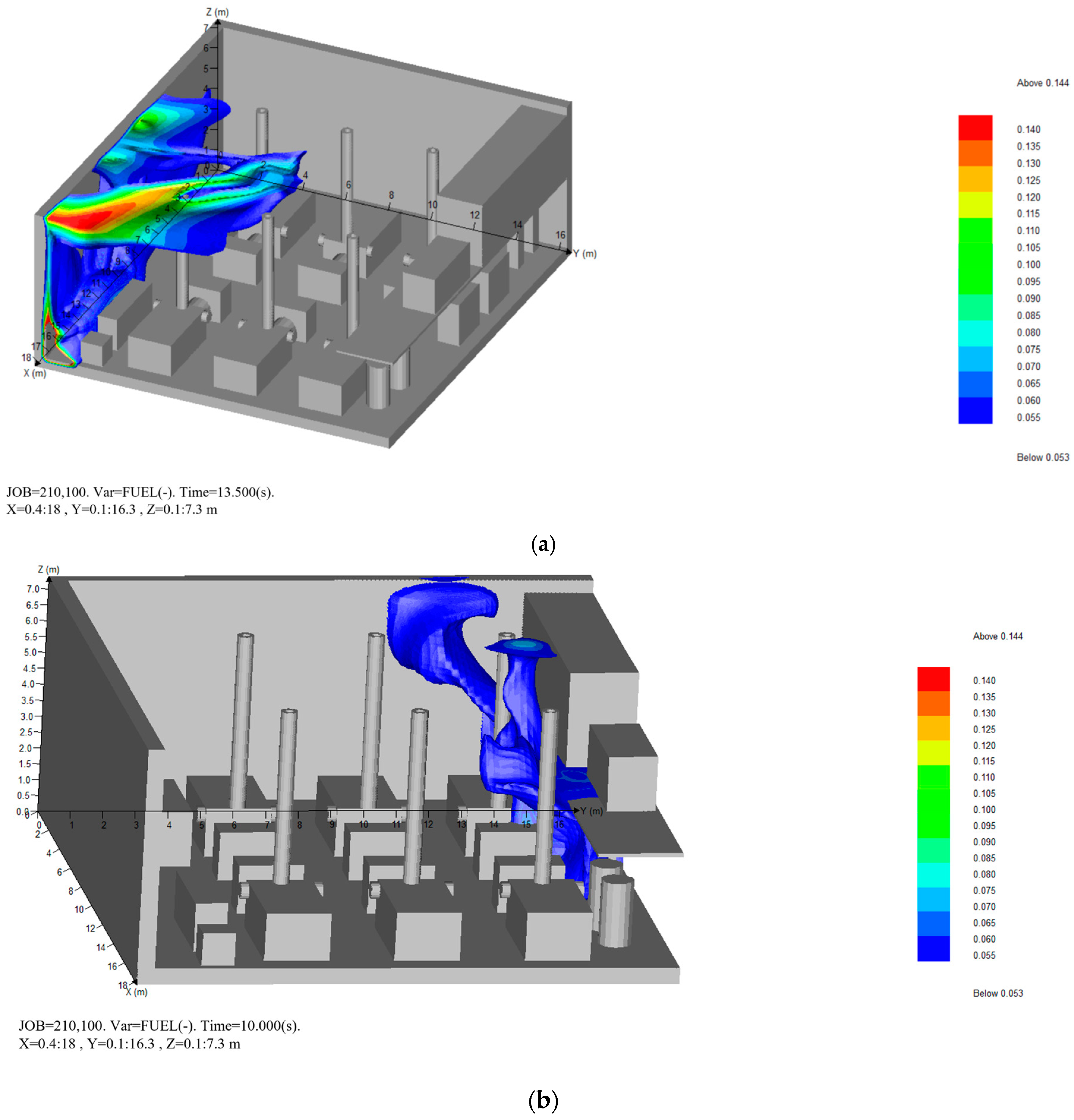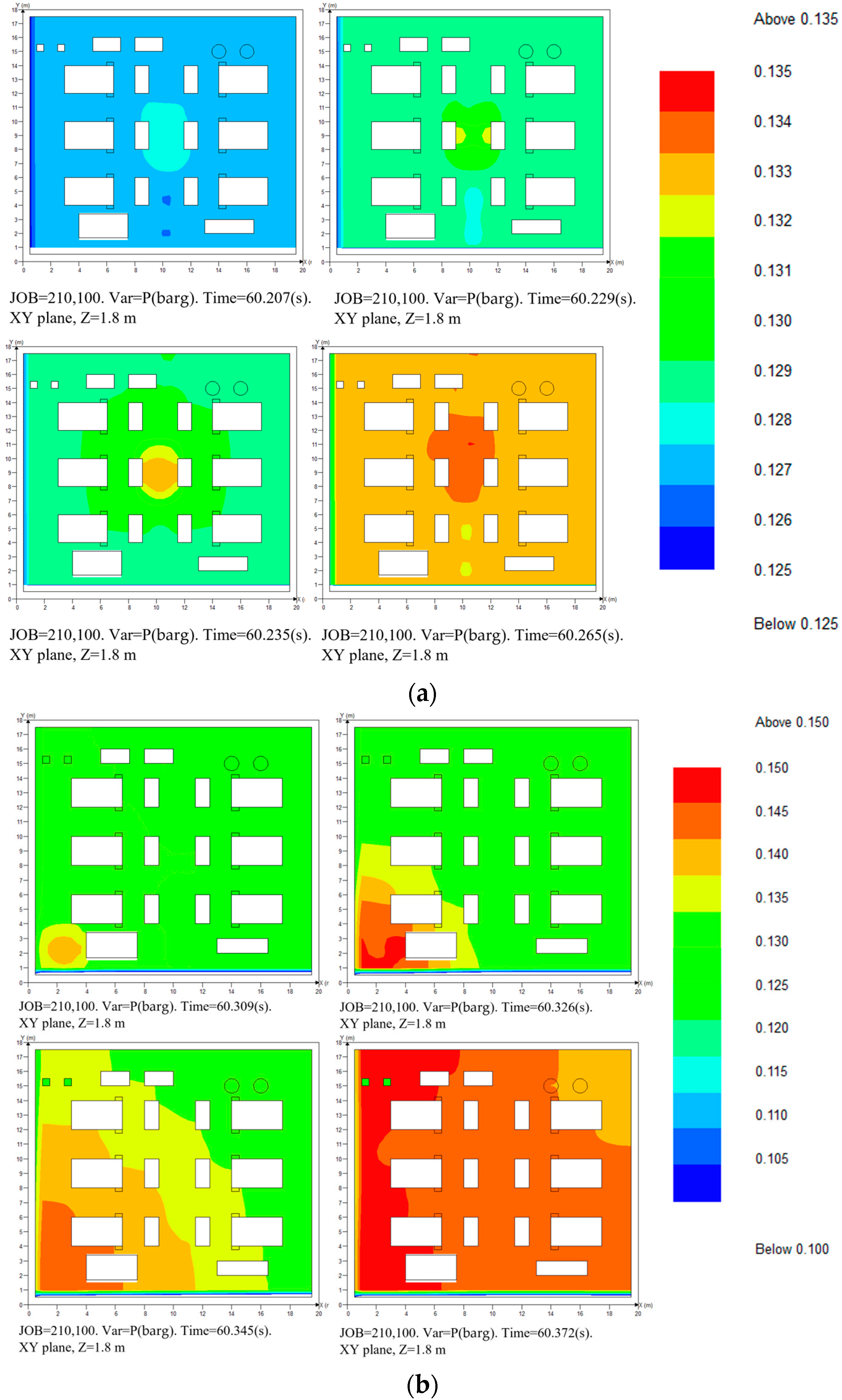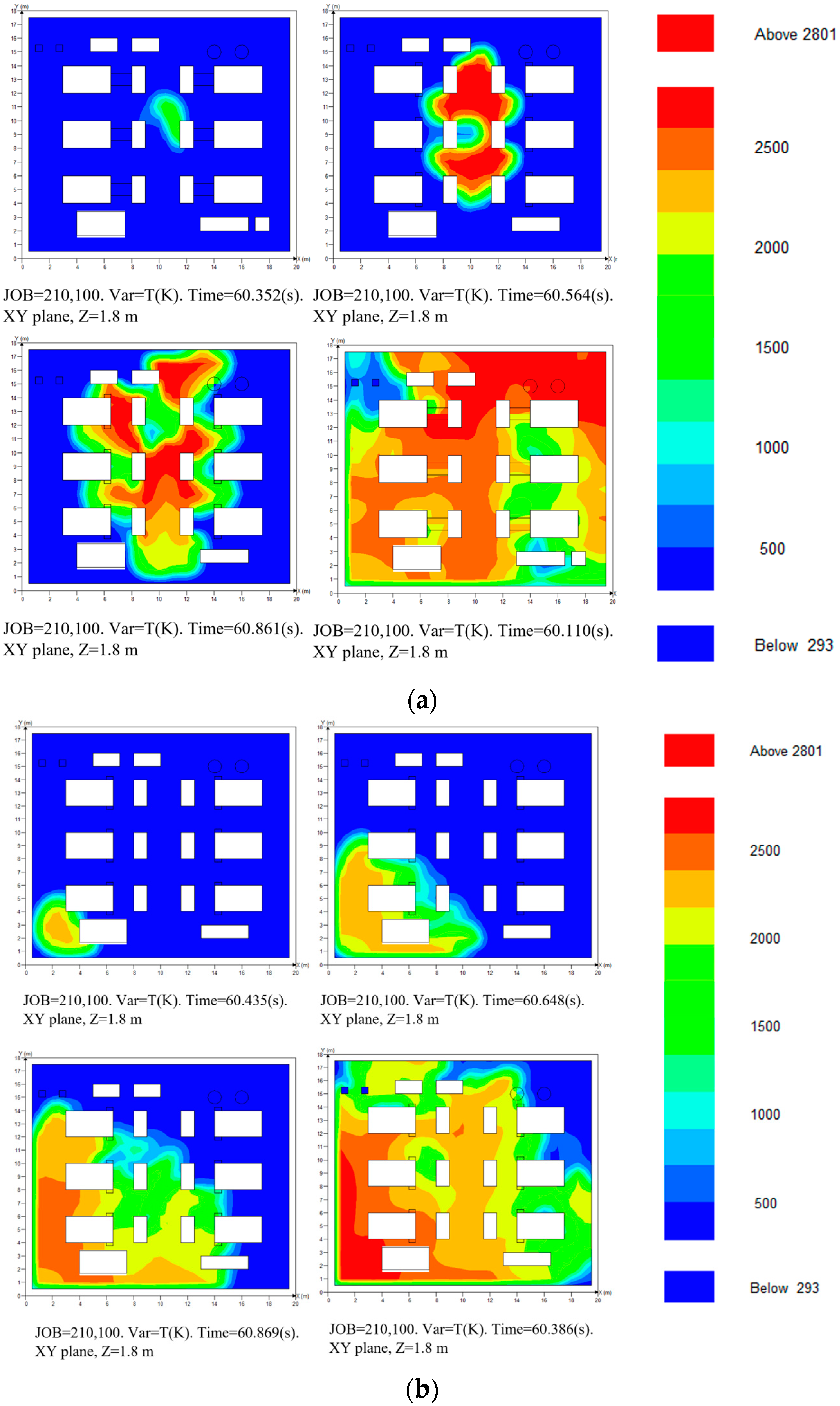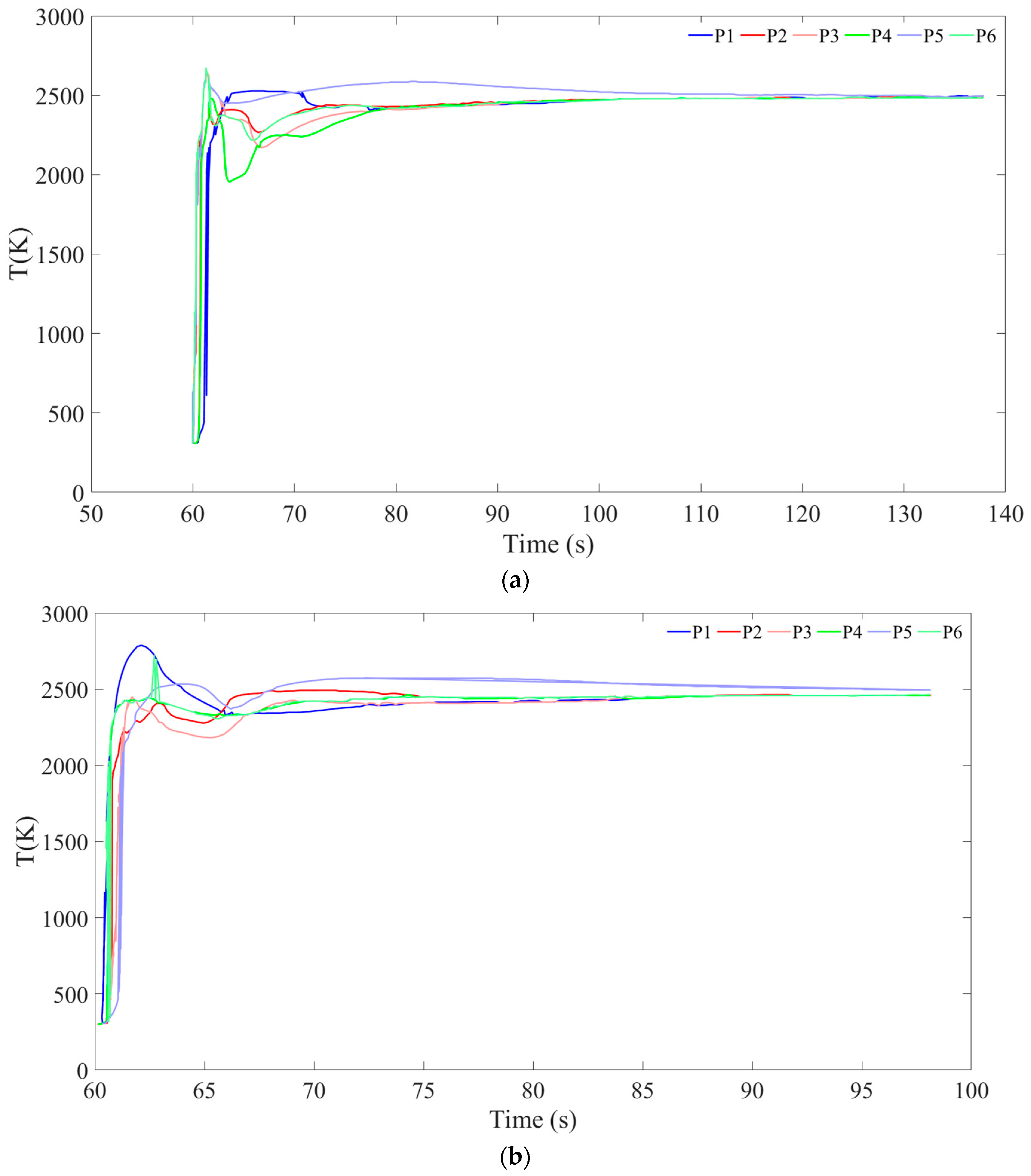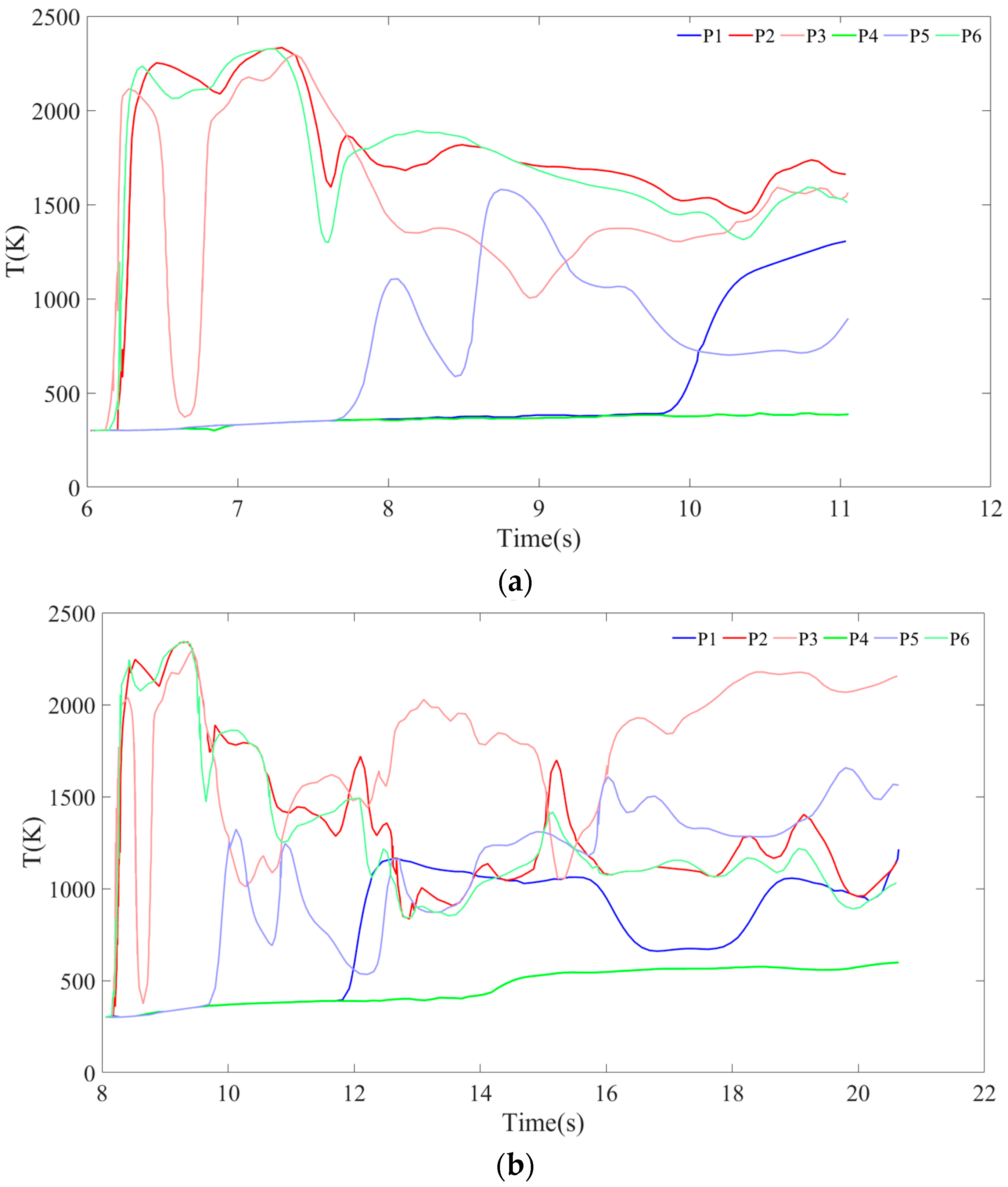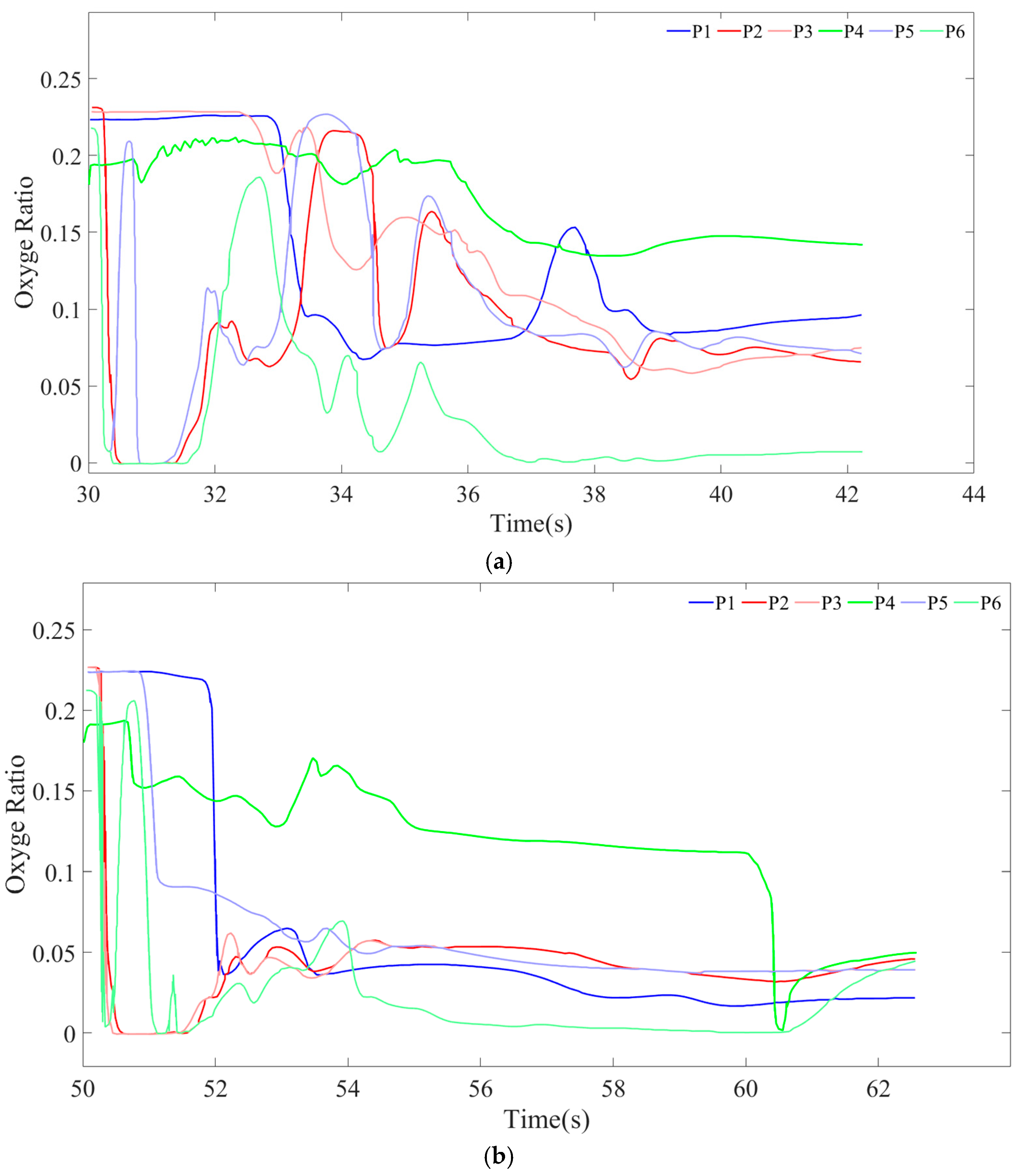1. Introduction
Ships have played a pivotal role in advancing global economic development and facilitating cultural exchange. However, in response to environmental changes and increasingly stringent international regulations on fuel emissions, the widespread adoption of LNG has emerged as a trend. Nevertheless, the unique properties of LNG pose significant challenges in its utilization and transportation [
1]. Liquefied Natural Gas (LNG) has the characteristics of low density and high calorific value. In the event of a leak, LNG evaporates quickly to form a flammable cloud. If this gas cloud encounters an ignition source, there is a significant risk of explosion, which could cause serious damage to life, property, health, and equipment. Under normal conditions, LNG is usually stored at low temperatures, which makes it difficult to ignite or explode. If natural gas leaks and mixes with the surrounding air to a concentration within its explosive range (with a volume concentration of approximately 5.3% to 14.4%), it becomes susceptible to explosion upon contact with an ignition source [
2,
3]. Therefore, simulation studies on leakage, dispersion, and explosion processes are of critical importance. The physical and chemical properties of LNG are shown in
Table 1.
The thermophysical parameters in the table are related to their temperature, and the formula is as follows [
4]:
In recent years, with the rapid development of computer technology, numerical simulation has become the core means to study gas leakage, diffusion, and explosion phenomena. In the field of gas leakage and diffusion, scholars have revealed the dynamic laws under the coupling of multiple factors through computational fluid dynamics (CFD). Gopalaswami et al. analyzed the evaporation and diffusion process of LNG in a confined waterway based on CFD and pointed out that the wind field significantly affects the distribution of vapor cloud through entrainment and convection [
5]; Li et al. further studied the ship engine room environment and found that in the case of small leaks, the flammable concentration of natural gas is confined to the local space, while medium leaks tend to form a diffuse cloud at the top [
6]. In terms of research methods, Liu et al. innovatively combined particle image velocimetry (PIV) with CFD to improve the accuracy of leakage prediction under multiple working conditions [
7]; The Euler–Lagrangian three-dimensional model established by Sun et al. has expanded the research dimension of underwater gas diffusion [
8]. In addition, equivalent models and experimental verifications further enhance the reliability of simulation results, such as the equivalent small tube model of submarine natural gas release [
9] and the verification of the applicability of the k-ε turbulence model in closed spaces [
10]. The analysis of key influencing factors shows that leakage rate, environmental conditions, and leakage port parameters play a decisive role in the diffusion behavior [
5,
8,
9,
11].
In terms of explosion mechanism and disaster prevention and control, the explosion characteristics of confined spaces and their influencing factors have become the focus of research, such as short-term impact and long-term pressure loads [
12]. In this regard, FLACS software has been widely used in explosion simulations of complex scenarios: Zhang et al. found that the dominant effect of vapor cloud shape on explosion intensity exceeded that of fuel mass [
13], while Z. Li et al. pointed out that the length of the natural gas tank and the ignition position had limited effects on the maximum overpressure [
14]. In terms of explosion suppression, studies such as the fire-extinguishing mechanism of ultrafine water mist [
15] and the reduction effect of ventilation systems on hydrogen explosion risks [
16] have provided theoretical support for safety design. Dynamic evolution research, through a combination of experiments and simulations, has revealed the regulation of the size of the pressure relief port on the explosion pressure and flame structure [
17], as well as the applicability of the detached vortex simulation and thickening flame model in explosion evolution [
18].
Safety research on specific flammable gases and scenarios presents differentiated characteristics. Regarding hydrogen energy safety, scholars focus on the acceleration effect of pipeline obstacles on flame propagation [
19], the coupling risk of a methane–hydrogen mixed explosion [
20], and the propagation law of shock waves in hydrogen refueling stations [
21]; in the field of LNG and natural gas, they focus on the analysis of ship leakage accidents [
22] and the prevention and control of steam-cloud explosions in pipeline corridors [
13,
14]. In addition, the explosion prediction model of gasoline evaporation and diffusion [
23] and the overpressure distribution of solid and liquid fuel cloud explosions [
24] have expanded the research boundaries of traditional combustibles. In multi-factor coupling and risk assessment, the sensitivity of water temperature and water level to steam explosion [
25] and the interaction of multi-source explosion pressure waves [
26] reveal the disaster-chain effect of complex environments, while the EU DEMO reactor hydrogen explosion risk assessment [
27] and the quantitative design of ventilation systems [
16] have promoted the engineering application of risk prediction models.
In general, current research shows three major trends: first, the high precision of tools such as CFD and FLACS and the coupling of multiple physical fields, such as PIV-CFD combination [
7]; second, the shift in safety design from passive prevention and control to active suppression, such as ultra-fine water mist [
15] and ventilation optimization [
16]; third, the extension of scenarios from industrial facilities to new energy and extreme environments. In the future, further breakthroughs are needed in the refined modeling under complex boundary conditions, the development of new explosion suppression materials and technologies, and the dynamic assessment of multi-scale risk chains. Based on the above literature, it can be considered that the research on LNG ship leakage and explosion has made certain progress, but the research on the safety of the LNG ship engine room is still insufficient; the simulation research on the coupled gas leakage, diffusion, and explosion in the ship engine room, especially, is still relatively limited. In addition, compared with other closed places, the structure of the ship engine room is relatively special. Affected by the behavior of the ship and environmental conditions, the internal layout, ventilation, and other factors are more complicated, the safety challenges are more severe, and the rescue is more difficult.
The innovation of this study is mainly reflected in the following aspects: In previous related studies, the simulation of LNG leakage and explosion was relatively scattered. This paper uses FLACS V9.0 software to numerically simulate the coupling process of gas leakage and explosion in the ship’s engine room, which is closer to the actual situation and provides a reference for the formulation of future ship design and personnel safety regulations; based on the numerical simulation results of a leakage explosion, this paper discusses the hazards of explosion to the human body from the perspectives of explosion overpressure, explosion temperature, and quality of post-explosion combustion products, puts forward suggestions for reducing the hazards of explosion, and obtains the optimal escape time for ship staff after an early leakage-induced explosion. At the same time, it analyzes the changing trend of the proportion of harmful gases after combustion, which has certain reference significance for rescue after the accident. This paper is organized as follows: the first part conducts a literature review and points out the innovations and key contributions of this paper; the second part explains the complete theoretical framework model of leakage diffusion, gives the geometric model and boundary conditions of the study, and performs a grid independence analysis; the third part shows and analyzes the numerical simulation results of leakage and explosion; the fourth part discusses the influence of different ignition sources on shock waves and the influence of various factors after the explosion on human body injuries; and the fifth part summarizes the whole paper and draws conclusions, pointing out the shortcomings of current research.
5. Conclusions
Based on reference [
30], this study innovatively conducted a joint numerical simulation of natural gas leakage and explosion in the engine room of an LNG-powered ship, aiming to analyze the explosion hazards and propose risk mitigation strategies. The CFD-based risk analysis reveals critical insights into the coupled mechanisms of gas dispersion and explosion dynamics in confined ship cabins, addressing a key gap in LNG vessel safety assessment.
The results of numerical simulation analysis show that natural gas will reach the highest concentration along the injection direction. The obstacles formed by dense equipment in the cabin will significantly change the gas diffusion path. The obstacles have a certain hindering and cumulative effect on the diffusion of gas, which can accelerate the formation of local high-concentration areas. Based on this characteristic, the gas concentration can be controlled and the large-scale diffusion of gas can be prevented. In the scenario of a 50 s gas cloud explosion, the cabin pressure finally stabilized at 6.5 barg, which is much higher than the traditional open-space simulation results. The article compares gas cloud explosions caused by different leaks and at different times, and concludes that the initial time of a leak is very important, and gas leaks should be detected and handled as early as possible. In the early stages of a gas leak, cabin crew members have about 5 s to escape. The article compares gas cloud explosions caused by different leaks at different times and concludes that the danger of explosion will gradually increase with the extension of the leak time, so gas leaks should be detected and handled as early as possible. Finally, the article analyzes the oxygen content and combustion product ratio in the cabin after the explosion, and proposes a modular layout–directional ventilation–gas detection collaborative strategy to reduce harm to the human body. The results of this study have certain reference value for the design and safety management of LNG ship engine rooms, and also have certain significance and contribution to the coupling research of gas leakage and explosion. In practical applications, the simulation results and analysis of this study have certain reference significance and contributions in the design of ship engine rooms, the writing of safety codes for ship crews, and rescue and fire fighting after explosions.
This study demonstrates the value of CFD in quantifying and managing LNG leakage and explosion risks, providing a scientific foundation for safer LNG-powered ship design.
